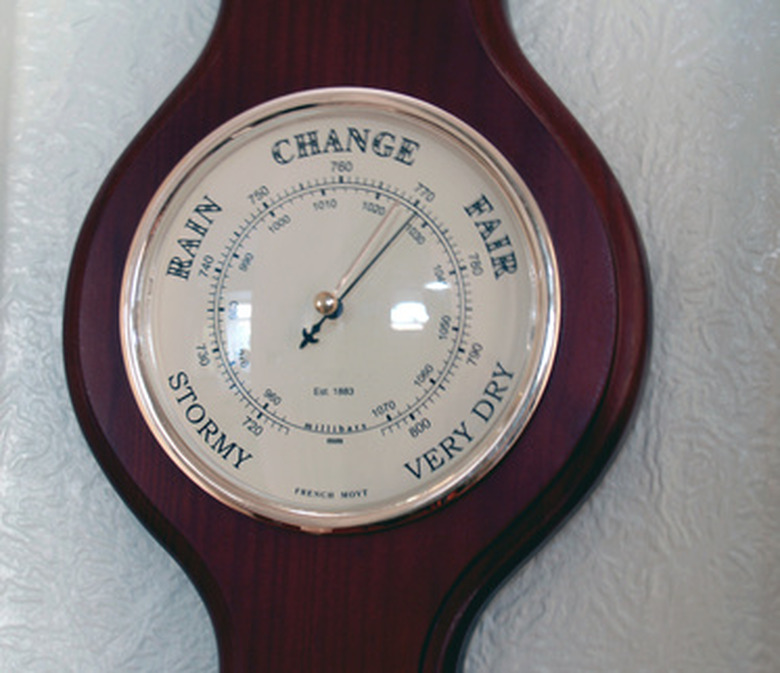How To Convert Barometric Pressure To mmHg
Barometric pressure is a measure of atmospheric pressure as measured by a barometer. Barometric pressure is commonly referenced in weather reports as either high or low. In the case of weather systems, the terms low and high are relative terms, meaning that system has either lower or higher barometric pressure than the surrounding areas. Many barometers use mercury to measure barometric pressure. Since the chemical symbol for mercury is Hg, readings of barometric pressure are often reported in inches of mercury (in/Hg) or millimeters of mercury (mmHg). One atmosphere of barometric pressure is equal to 760 millimeters of mercury.
Step 1
Get your barometric pressure reading in atmospheres.
Step 2
Multiply the barometric pressure reading in atmospheres by 760 millimeters of mercury.
Step 3
Check your work using an online conversion tool like the one linked in the references below.
TL;DR (Too Long; Didn't Read)
Other common conversions:
One atmosphere equals 14.7 pounds per square inch (PSI) One atmosphere equals 29.92 inches of mercury (in/Hg)
Cite This Article
MLA
Mikulka, Justin. "How To Convert Barometric Pressure To mmHg" sciencing.com, https://www.sciencing.com/convert-barometric-pressure-mmhg-7778421/. 24 April 2017.
APA
Mikulka, Justin. (2017, April 24). How To Convert Barometric Pressure To mmHg. sciencing.com. Retrieved from https://www.sciencing.com/convert-barometric-pressure-mmhg-7778421/
Chicago
Mikulka, Justin. How To Convert Barometric Pressure To mmHg last modified March 24, 2022. https://www.sciencing.com/convert-barometric-pressure-mmhg-7778421/
